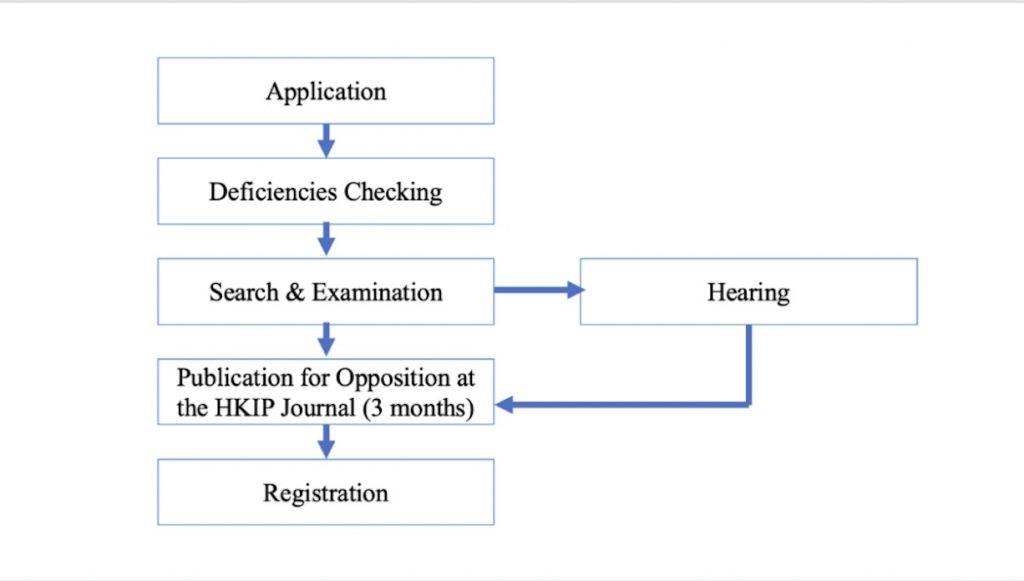
TRADEMARK GUARDIAN
What is Trademark and Why it is important?
Trademarks hold significant value as assets for businesses.
A trademark refers to a distinctive symbol, logo, or name that has the ability to differentiate the goods or services provided by one company from those offered by other companies.
The trademarks of numerous companies constitute a substantial portion of their overall value, such as: Apple, McDonald, Microsoft….

Important Information You Need To Know Before Registration
Prior to officially registering a trademark, it’s important to note that registration is not obligatory. However, it is strongly encouraged to register the trademark at the Trade Marks Registry as registering a trademark makes it more convenient to protect and enforce the rights associated with the trade mark.
If you choose not to register your trademark, you can still use it, but proving your ownership becomes more challenging. Without registration, your protection of the mark is limited, and it may be more difficult to enforce your rights if someone else infringes upon your mark.
Registering your trademark provides you with the exclusive right to use the mark for the goods and services specified in the registration. This means that other traders in the Hong Kong Special Administrative Region (Hong Kong SAR) are prohibited from using the same or similar mark without your permission. If they do, it would be considered trademark infringement, and you have the legal option to take action against them.
Registering your trademark provides stronger legal protection and establishes your ownership and exclusive rights to use the mark. It is an important step to safeguard your brand and prevent others from using your mark without authorization.
Things to know before applying for a trademark
In a trademark application, it is necessary to specify the categories of goods and services that the trademark will be associated with.
The Nice Agreement, which established the International Classification of Goods and Services for Trademark Registration, consists of 45 classes that categorize different types of goods and services.
- Goods: Classes 1-34
- e.g. Class 9 : Scientific apparatus; Class 18 : Bags; Class 25 : Clothing; Class 28 : Toys
- Services: Classes 35-45
- e.g. Class 35 : Retail services; Class 36 : Insurance and finance; Class 43 : Restaurant service


Things to avoid before applying for a trademark
According to the statute, there are three questions to ask yourself before applying for a trademark in determining distinctiveness.
- What constitutes similarity of marks;
- Not separate considerations
- There is interdependence between the relevant factors
- In particular a similarity between the trade marks and between the goods or services
- Case authority: Canon KK v Metro-Goldwyn Mayer Inc [1999] RPC 117 , [17] (ECJ)
- Not separate considerations
- What constitutes similarity of goods or services; and
- Interaction
- A lesser degree of similarity between the goods or services may be offset by a greater degree of similarity between the marks, and vice versa.
- Christie Manson & Woods Ltd v Chritrs (Group) Ltd [2012] 5 HKLRD 829 [28]-[29]
- Interaction
- What constitutes the likelihood of confusion
- A high degree of similarity
- Nothing to offset
- Possible confusing effects
- Medion AG v Thomson Multimedia Sale
- – Likelihood of confusion between composite trade mark and earlier mark contained in it
- ① the goods or services covered by competing signs are identical
- ② the earlier word mark has normal distinctiveness
- The ECJ: Applying Globle approach: The global appreciation of the likelihood of confusion, in relation to the visual, aural or conceptual similarity of the marks in question, must be based on the overall impression given by the marks, bearing in mind, in particular, their distinctive and dominant components. The perception of the marks by the average consumer of the goods or services in question plays a decisive role in the global appreciation of that likelihood of confusion. In this regard, the average consumer normally perceives a mark as a whole and does not proceed to analyse its various details (see, in particular, SABEL, paragraph 23, Lloyd Schuhfabrik Meyer, paragraph 25, and Matratzen Concord, paragraph 29)
- Reasoning: For average consumer, the overall impression may be dominated by one or more of its components However, it is quite possible that in a particular case an earlier mark used by a third party in a composite sign including the name of the company of the third party still has an independent distinctive role in the composite sign, without necessarily constituting the dominant element. In such a case the overall impression produced by the composite sign may lead the public to believe that the goods or services at issue derive, at the very least, from companies which are linked economically, in which case the likelihood of confusion must be held to be established.
- Takeaways:
- The marks have to be examined as a whole;
- it is quite possible that, in particular circumstances, an earlier mark used by a third party in a composite sign with the third party’s company name can have an independent distinctive role in the composite sign, without necessarily constituting the dominant element;
- a finding that there is a likelihood of confusion should not be subject to the condition that the overall impression produced by the composite sign be dominated by the part of it that is represented by the earlier mark; and
- the owner of the earlier mark would be deprived of its exclusive trademark rights if there was a requirement that the earlier mark in the composite sign needs to dominate the overall impression of the later composite mark.
- Takeaways:
Global assessment for determining distinctiveness/similarities
- Sabel BV v Puma AG , 55
- ① all factors relevant
- ② Based on overall impression
- ③ distinctive and dominant components
- ④ average consumer
In assessing the similarity of marks, one should consider the resemblance from the visual, aural, oral and conceptual point of view.
- Hearst Holdings Inc v AVELA Inc [2014] FSR 36, [155].
These elements of comparison differ in relevance, taking into account various factors including the category of goods or services in question and the circumstances in which they are marketed
- Shaker v Office for Harmonisation in the Internal Market (Trade Marks and Designs) [2009] ETMR 16 , [36]
The distinctiveness of a trademark is crucial in determining its eligibility for registration. A trademark should possess the ability to stand out and differentiate your goods or services from those of other traders. Whether it is a logo, word, picture, or any other form, your trademark should clearly establish a unique identity that sets it apart.
1. The trademark must be capable of distinguishing from other undertakings (s.3(1) Trade Marks Ordinance)
- Test – AD2000 Trade Mark [1997] RPC 168
- “a sign represented graphically is only “capable” to the limited extent of being “not incapable” of distinguishing goods or services of one undertaking from those of other undertakings”
2. The trademark must not be devoid of any distinctive character
- The mark must serve to identify the goods or services as originating from a particular undertaking such that they are distinguished from others
- Test – British Sugar Plc v James Robertson & Sons Ltd [1996] RPC 281
- “Is it the sort of word (or other sign) which cannot do the job of distinguishing without first educating the public that it is a trade mark?”
- The mark must be inherently distinctive, no matter how much it may be used or recognised in practice
- Question of degree
- “the distinctiveness of the mark must be assessed by reference to the goods or services for which registration is sought and the perception of the relevant consumers who are reasonably well-informed, observant and circumspect” – Host Hotels & Resorts [2001] 1 HKLRD 541
- “Is it the sort of word (or other sign) which cannot do the job of distinguishing without first educating the public that it is a trade mark?”
If your trademark directly describes the goods and services it represents, or if it indicates their quality, purpose, quantity, or value, it is likely to face objections from the trademark authority. Similarly, if your mark incorporates a geographical name, it is also likely to be objected to.
Trade Marks Ordinance s.11(1)(c) prohibits trade marks which:
- consist exclusively of signs which may serve, in trade or business, to designate the kind, quality, quantity, intended purpose, value, geographical origin, time of production of goods or rendering of services, or other characteristics of goods or services
How to determine descriptiveness?
- Factuality & Objectiveness
- The greater the factual and objective connection between a term and its application in trade, the higher the probability of using the term as a trade designation.
- Perceivability
- The easier it is for a consumer to understand and recognize a characteristic indicated by a term, the less likely that term will qualify for registration as a trademark.
- Significance
- If the characteristic designated by a term is essential, central to the product, or of significant importance in a consumer’s decision-making process, it is more likely that the registration of that term as a trademark will be refused.
Finally, remember to conduct a trademark search before applying!
After taking a look at above, the question next is how to avoid the situation that will cause your trademark to be unregistrale.
Therefore, performing a search of the trademark register is a crucial step to determine if your trademark is already registered or if another trader has filed an application for a similar mark. To assist with this process, you have two options:
- Preliminary Advice Services: You can utilize the Preliminary Advice Services provided by the Intellectual Property Department Hong Kong. This involves submitting Form T1 to request a search of the trademark records. The authority will conduct the search and provide you with preliminary advice based on the results.
- Online Trade Mark Search System: Alternatively, you have the option to conduct your own search using the online Trade Mark Search System. This online tool allows you to search the trademark register and check if there are any existing registrations or pending applications that resemble your proposed trademark. https://esearch.ipd.gov.hk/nis-pos-view/#/tm/quicksearch?lang=en


Steps for applying a trademark in Hong Kong
You can submit an application for trademark registration to the Trade Marks Registry, which is part of the Intellectual Property Department under the Government of the Hong Kong SAR. This application can be completed either online or by physically filing it with the Trade Marks Registry.
For more details, please check our illustration video below.

Frequently asked questions during the application
Application fees
The application fee to register a trademark in one class of goods or services in Hong Kong is HK$2,000. If you wish to register your trademark in additional classes of goods or services, there is an additional fee of HK$1,000 for each additional class. This fee structure allows for flexibility in registering a trademark across multiple classes if needed.
Useful Links
Disclaimer: Nothing in this website is intended to be nor should be construed as legal advice. This is an educational project created by students. Please consult your lawyer for legal advice.